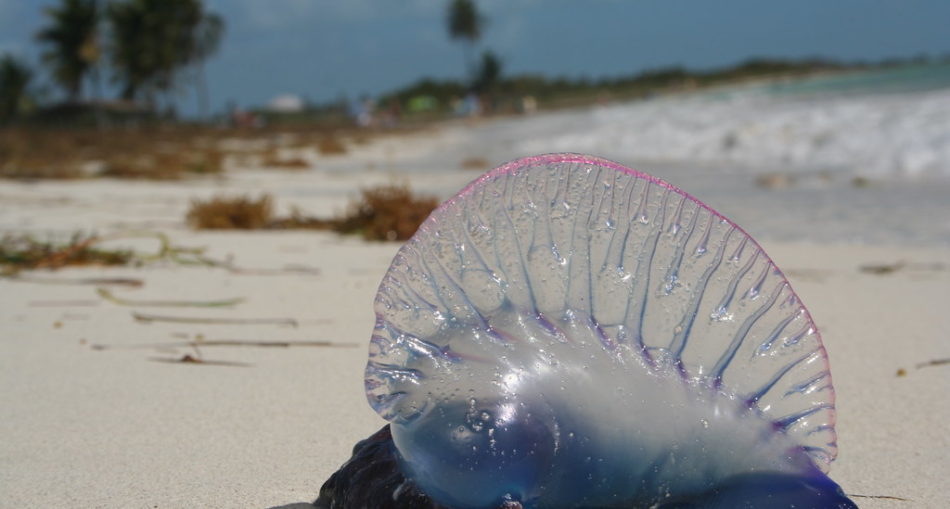Man o’ war derives its name from the man-of-war, a sailing warship, and the animal’s resemblance to the Portuguese version (the caravel) at full sail. This jellyfish may look beautiful, a bit ethereal even, but don’t be fooled by its appearance it may be able to kill you.
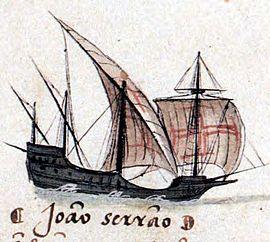
Photo of man o’ war ship. Photo Source: https://en.wikipedia.org/wiki/Portuguese_man_o%27_war
Description
The Portuguese man o’ war is often called a jellyfish but is actually a species of siphonophore, a group of animals that are closely related to jellyfish. A siphonophore is unusual in that it is comprised of a colony of specialized, genetically identical individuals called zooids — clones — with various forms and functions, all working together as one. Each of the four specialized parts of a man o’ war is responsible for a specific task, such as floating, capturing prey, feeding, and reproduction. The pneumatophore, or bladder, is the most conspicuous part of the man o’ war. It is translucent and tinged blue, purple, and pink, and may be 9 to 30 cm, this pneumatophore acts as a floatation device. A Portuguese man o’ war is somewhat asymmetrically shaped.
Habitat
The Portuguese man-of-war lives at the ocean’s surface, mostly in tropical and subtropical waters. The gas-filled bladder, or pneumatophore, remains visible on the surface, while the rest of the body is submerged. The Portuguese man-of-war has no propulsion and moves passively, propelled by the winds, currents, and tides. Winds can cause them to drift into bays or onto beaches. Finding a single Portuguese man o’ war is frequently followed by discovering a swarm of others nearby. Beachgoers are well aware of the painful stings delivered by the Portuguese man o’ war’s tentacles. Finding one on the beach you might be tempted to touch it or poke it with a stick because it looks like a colourful plastic bag but don’t even try because they can deliver a deadly sting.
Diet
The Portuguese man of war eats meat. A man o’ war traps and paralyzes its prey with its venomous tentacles before “reeling” it inwards to the digestive polyps. It eats small adult fish and fish fry (young fish), as well as zooplankton, shrimp, and other small crustaceans.
Reproduction
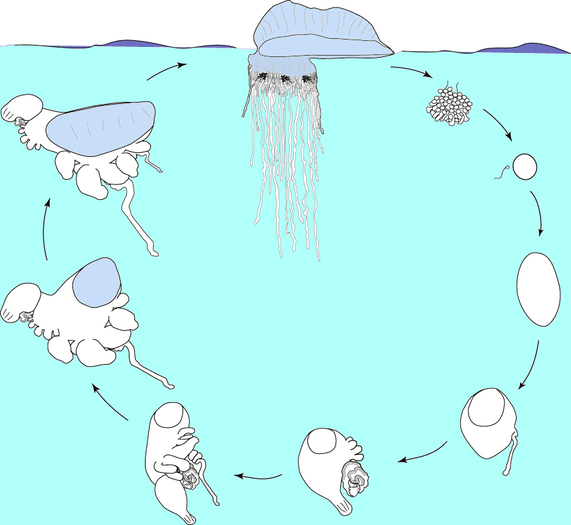
Life cycle of the Portuguese Man o’ War. Photo Source: https://en.wikipedia.org/wiki/Portuguese_man_o%27_war
Man o’ wars is dioecious, which means that each colony is either male or female. Gonophores that produce sperm or eggs (depending on the sex of the colony) sit on a tree-like structure called a gonodendron, which is thought to fall off the colony during reproduction. Mating occurs primarily in the autumn when gonophores shed eggs and sperm into the water. Because neither fertilization nor early development has been observed directly in the wild, it is unknown at what depth they occur. A fertilized man o’ war egg develops into a larva that, as it grows, buds off new zooids, gradually forming a new colony. This process begins underwater and has been reconstructed by comparing different stages. The growing pneumatophore eventually becomes buoyant enough to carry the immature colony to the water’s surface.
How It Attacks
The stinging, venom-filled nematocysts in the Portuguese man o’ war tentacles can paralyze small fish and other prey. Detached tentacles and dead specimens (including those washed up on shore) can sting just as painfully as live organisms in the water and may remain potent for hours or even days after the organism’s death or tentacle detachment. Stings can cause excruciating pain and sometimes the venom may travel to the lymph nodes causing an allergic reaction that could cause death (in a worst-case scenario).
Cool Facts:
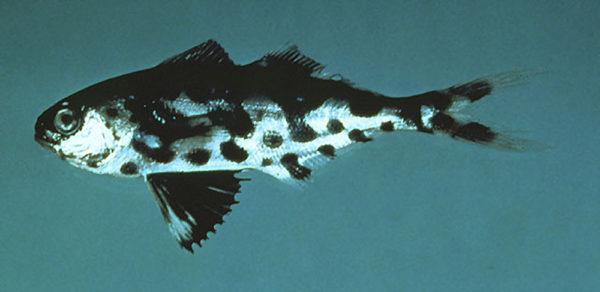
Man-o-war fish. Photo Source: https://en.wikipedia.org/wiki/Man-of-war_fish
- There is a fish called the ‘ man-o-war fish which lives in the tentacles of the Portuguese man-o-war, they use their incredible agility in swimming to avoid the deadly tentacles.
- The Portuguese man-o-war has predators and one of them is the violet sea-snail, Janthina janthina, who uses a bubble raft to float near the surface of the water in the hope of encountering a man-of-war meal. These snails have dark purple undersides and are paler purple on top for camouflage.
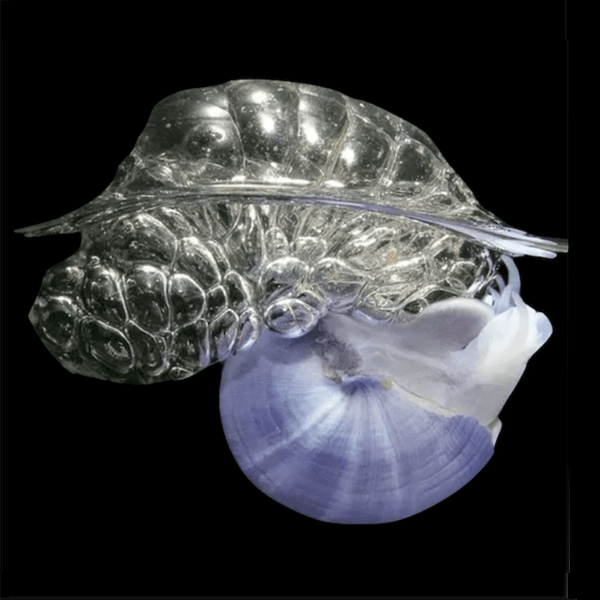
Violet Sea Snail a predator of the Portuguese man-o-war. Photo Source: https://commons.wikimedia.org/wiki/File:Violet_snail_Janthina_sp.png
3. The float of most siphonophores is filled with gasses of a similar concentration to that found in the air in our atmosphere. Man-of-war floats contain these same gasses in similar ratios, but with a large proportion of carbon monoxide.
References:
- https://en.wikipedia.org/wiki/Portuguese_man_o%27_war
- https://www.floridamuseum.ufl.edu/science/five-facts-portuguese-man-of-war/
- https://oceanservice.noaa.gov/facts/portuguese-man-o-war.html

